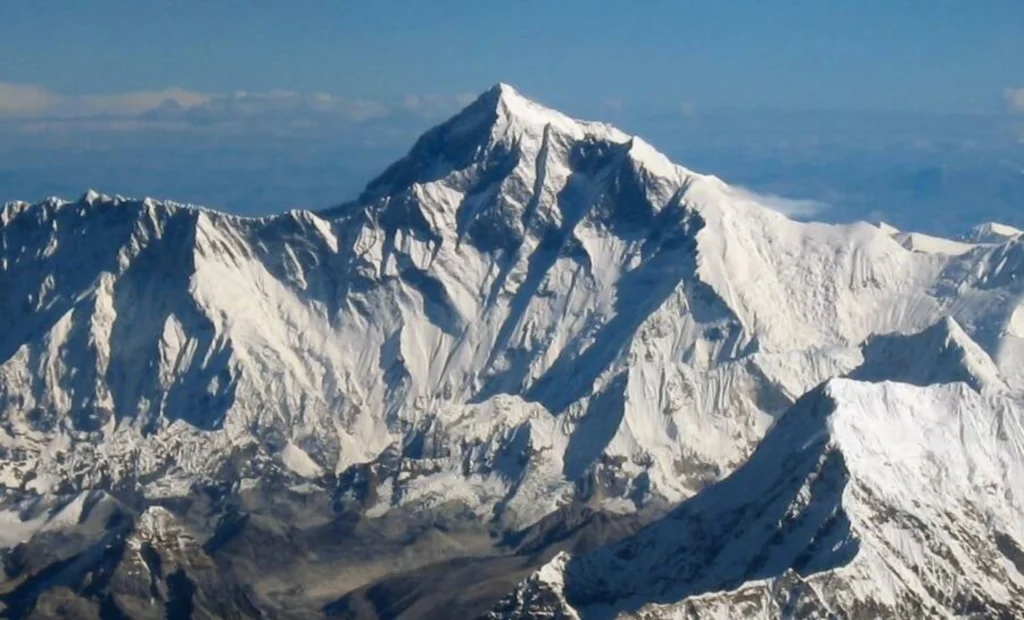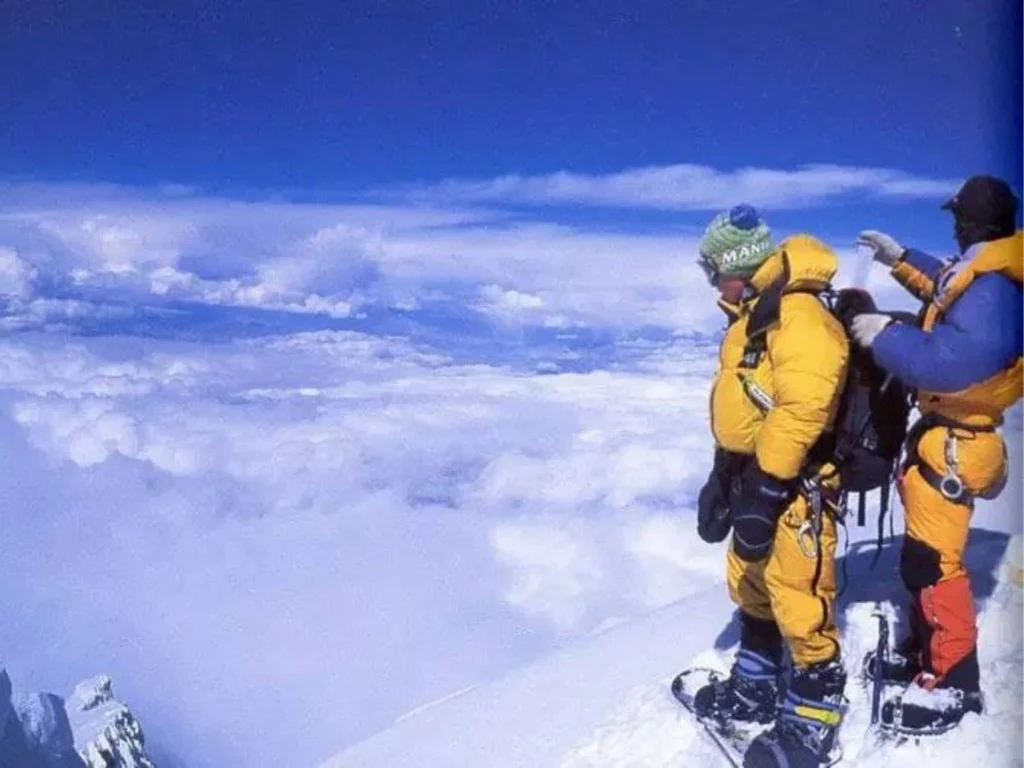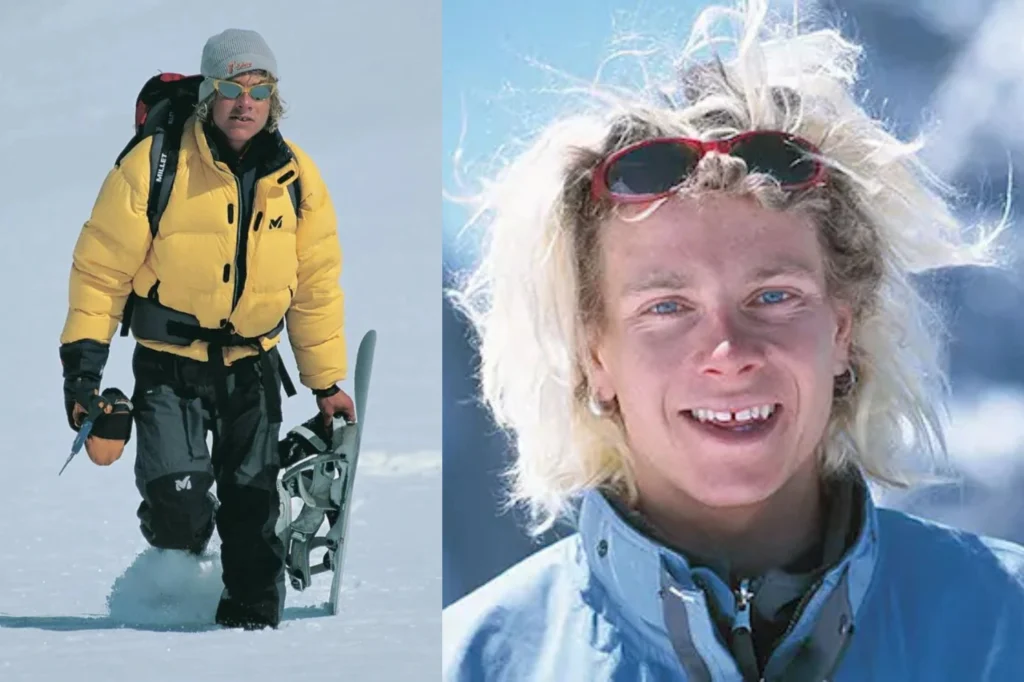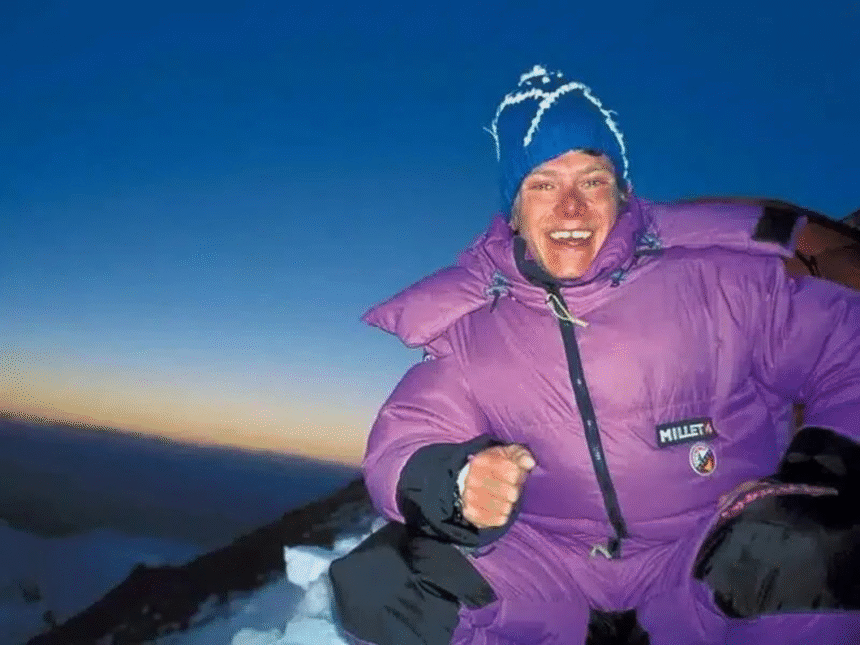On May 23, 2001, a young French snowboarder named Marco Siffredi strapped into his board at the very top of Mount Everest and made history. He carved his way down the world’s tallest peak, earning a place in snowboarding legend. But Siffredi’s story didn’t end in triumph.
A year later, he went back to Everest to try an even more dangerous route called the Hornbein Couloir. That choice would change everything. Marco vanished into a deadly silence and more than two decades later, no trace of him has ever been found.
A Childhood in the Shadows of Giants

Marco Siffredi was born on May 22, 1979, in Chamonix, France, a small mountain town nestled in the shadow of Mont Blanc. For locals, skiing, climbing and guiding were a way of life and Marco was no exception.
His father worked as a mountain guide and his older brother Pierre was also deeply involved in mountaineering. Tragedy struck early—Pierre died in an avalanche not far from their home.
Those early losses shaped Marco’s character. By the mid-1990s, he was carving out his own reputation as a daring snowboarder. He switched from skiing to snowboarding in 1995 and within a year, he was tackling some of Chamonix’s most intimidating routes.
In 1996, he descended the Mallory track on the North Face of the Aiguille du Midi, a steep, icy face with pitches of over 50 degrees. That same year, he became the first person to ride down the Chardonnet on a snowboard, cementing his status as a bold up-and-comer, according to All That’s Interesting.
By 1998, Marco had expanded his playground to South America. In Peru, he summited the 6,000-meter Tocllaraju and successfully snowboarded down with a group of climbers.
His name began circulating among extreme sports enthusiasts as someone pushing boundaries. The following year, he made headlines again, becoming the second person ever to descend the Nant Blanc face of the Aiguille Verte—and the first to do it on a snowboard.
His ambitions didn’t stop at the Alps. In the Himalayas, he made the first snowboard descent of Dorje Lhakpa, a challenging peak with slopes of up to 55 degrees. Notably, Marco achieved this without supplemental oxygen. By 2000, he had ticked off Bolivia’s Huayna Potosi and the world’s sixth-highest peak, Cho Oyu, adding both to his growing résumé.
The Everest Dream

In 2001, Siffredi’s sights were set on Everest. At just 22 years old, he was ready to attempt what no one had done before: a full snowboard descent of the highest mountain on Earth. His goal wasn’t just Everest—it was Everest’s Hornbein Couloir, a treacherous, narrow gully slicing down the mountain’s north face.
The Hornbein, often called the “Holy Grail of snowboarding,” was a bold choice. Its steepness combined with unpredictable snow conditions, made it one of the riskiest routes in mountaineering history. But when Marco and his team arrived, the snow wasn’t deep enough to ride safely.
On May 23, 2001, he shifted his plan. With the help of oxygen and Sherpas carrying equipment, Marco reached the summit and dropped into the Norton Couloir instead. The descent was anything but easy.
At one point, his snowboard strap broke, forcing him to stop mid-descent. With help from a Sherpa, he repaired it, clipped back in and continued his ride. He descended roughly 660 feet down the steep Norton Couloir before riding all the way to Advanced Base Camp at 6,400 meters in about two hours.
As stated by Wikipedia, while Austrian climber Stefan Gatt had attempted a snowboard descent days earlier, he was forced to walk significant portions of the route. Everest News and Transworld Snowboarding magazine credited Marco as the first to complete a continuous snowboard descent of the mountain. His legend was born.
A Dream He Couldn’t Shake

But Marco wasn’t satisfied. In interviews, he spoke about the Hornbein Couloir as unfinished business. He knew it was one of the most dangerous slopes in the world but it called to him. Over the next year, he planned a second expedition, this time later in the season when snow would be deeper.
In September 2002, Marco returned to Everest with three Sherpas. The climb was brutal. The team battled chest-deep snow, and it took them 12 and a half hours to reach the summit. At 29,035 feet, they were deep in the Death Zone where oxygen levels are so low that even experienced climbers struggle to survive.
The Sherpas tried to talk him out of the descent. The hour was late, clouds were moving in and snow conditions were unpredictable. But Marco was determined, he swapped oxygen tanks, strapped on his board and told one of the Sherpas, “See you tomorrow.”
That was the last time anyone saw him alive.
The Hornbein Couloir is one of Everest’s deadliest routes. Its narrow slopes range from 45 to 55 degrees and avalanches are common. Marco dropped in alone and somewhere along the descent, he disappeared. No one knows if he fell, was buried by snow or simply vanished into one of the mountain’s many hidden crevasses.
Despite search efforts, no trace of Marco or his gear has ever been recovered. The mountain kept its secret. His disappearance added another layer to Everest’s legend, joining the stories of climbers like George Mallory, whose body wasn’t found until 1999.
The Legend Lives On

Marco’s family and friends were devastated but not entirely surprised. They knew his lifestyle came with risks. His sister once said she held onto hope that maybe he had survived, imagining he might be “living somewhere in Tibet with yak herders.” Most experts, however, agree that the chances of survival in Everest’s Death Zone are almost nonexistent.
The snowboarding world has never forgotten him. Professional snowboarder Jeremy Jones reflected on Marco’s fearless nature in a book about extreme riders: “He was a young punk rock kid going and tagging the most serious lines in the Chamonix valley… If he was alive today, he would be this huge name in snowboarding,” per People.
Writers and climbers have also described the haunting scene on the summit before his final descent: “By this time, clouds have begun to build from below. The Sherpas are concerned about the conditions as well as the late hour. They urge Marco not to go. But everything he’s worked for over the past year-and-a-half has led to this, and he may never have the chance again.”
Those words capture Marco’s spirit—restless, daring and unwilling to let go of a dream.
Marco Siffredi’s disappearance left a hole in the snowboarding and mountaineering communities but his boldness still inspires people today.
Today, his name is spoken with reverence among climbers and snowboarders. The Hornbein Couloir remains one of Everest’s most dangerous lines, and no one has repeated Marco’s attempt.
As Transworld Snowboarding once put it, Marco “didn’t just ride mountains; he redefined what was possible on them.” Two decades later, that legacy has only grown stronger.



